Tomas Saraceno’s quest for self-powered flight
After decades of ‘eco-suicide’, Tomas Saraceno — once an artist-in-residence at NASA — is on a mission for self-powered flight: ‘You don’t need $2 billion. For $20 you can take off tomorrow.’
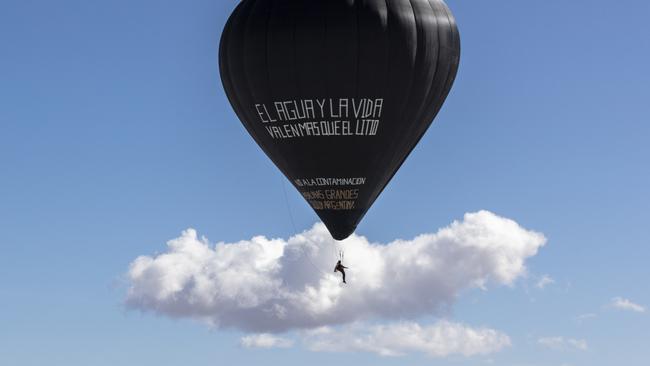
As he lifted into the air, Tomas Saraceno could make out his mother in the crowd. It was 2010 and the artist had invited her, as well as other close family members, to Cordoba, Argentina to witness human flight devoid of the use of fossil fuel, engines, solar panels or batteries. Just a man, a balloon and the sun.
Saraceno and his team had levitated upon a number of prototypes with vacillating success over the preceding five years, but he was now certain the Polyethylene design and construction were thoroughly trialled and ready to debut. As the sun ascended upon the horizon the balloon gradually began to inflate as the internal temperature swelled, pulling Saraceno skyward. But the transcendental moment was shattered as he “simply fell back down to earth”, slamming into the ground with such force it would break his back in two places. His rehabilitation would take six years.
Pacing his office in Berlin in 2022, the metaphor is not lost on the Argentinian: the chimerical musings of the artist, delusional in their real-life application. “Risk is a necessary consequence of change,” he retorts, moving to his computer to reveal his latest balloon designs. “We are always continually working on the control system. We are getting better.”
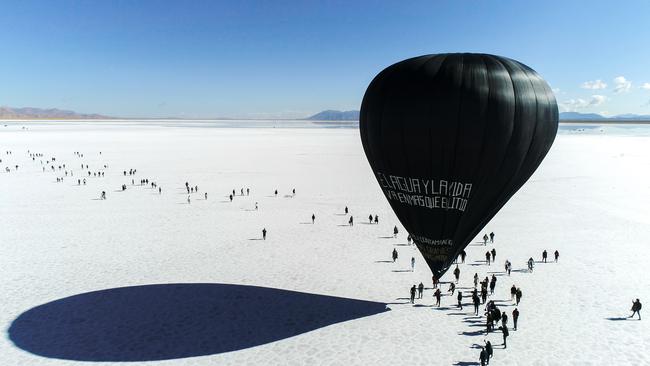
Flight has been a constant theme in Saraceno’s life: first absconding out of Argentina as a two-year-old following his father’s arrest amid the paranoia and violent prelude to the coup d’etat of 1976. After a decade living as refugees in Italy, the family would return to Argentina in 1986, with Saraceno eventually going on to study art and architecture in Buenos Aires.
The son of an agronomist father and botanist mother, he has “been plagued” by a compulsion towards both the aesthetic and corporeal implications of creative practice. “It’s a pain in the arse,” he laughs diffidently of his innate mistrust of purely symbolic gestures. “Everything has to have multiple purposes. To find peace in oneself, this is the difficult thing. But the world is falling apart … all I can do is try.”
It was this obsession that, in 2022, saw Saraceno and his team break 32 world records (including duration, distance and altitude, certified by the Federation Aeronautique Internationale) with the first untethered manned aerosolar flight, high above the salt lakes of Salinas Grandes in Argentina. Tellingly, he named the balloon the Aerocene Pacha, after the Incan cosmological concept of spacetime.
“When we saw it lifting up it was really a spiritual thing,” Saraceno, who habitually refers to his balloons as “sculptures”, recounts. “Like the reincarnation of some kind of ghost, like we were watching a spirit body rising from the earth. It came to life! Bodies floating in the atmosphere. It was almost like a ceremony.”
Unlike the handsomely reappointed districts of Kreuzberg and Friedrichshain to the west, Rummelsburg maintains the more ramshackle Berlin aesthetic of Cold War climes. Nearby the industrial eastern fringes of the River Spree, with its imposing thermal power station and cinereal concrete rail yards, Saraceno’s artistic compound sits wedged between a rock-climbing complex fittingly named Eastern Block and a former dog biscuit factory, now a notoriously hedonistic techno club.

Built in the predominate rationalist style of the early 20th century, there is little to betray what lays beyond the walls of Saraceno’s austere studio complex beyond a small clutch of 20-somethings vaping outside a small unmarked entrance. Once the headquarters for Agfa – a global pioneer of photographic materials, founded in the 19th century – today the site is equal parts artistic studio as madcap laboratory, with Saraceno its leading impresario.
Spread across multiple floors, the studio is as equally compelling as unsettling. Assistants perch precariously on ladders piecing together the filigree components of Saraceno’s trademark balloons and orbs, while just metres away large spiders are methodically weaving webs in custom built carbon fibre frames. Tuning forks are strewn around the room. “This is how we communicate with the spiders,” Saraceno deadpans.
Along with balloons, spiders are Saraceno’s other defining passion: having spent years exploring their behavioural patterns and applying the concept of vast webs to demonstrate humankind’s interconnectedness with the planet. In 2017, he released an album titled Arachnid Orchestra Jam Session, transposed from the primordial vibrational frequencies of spider webs.
“Like any child, I was always fascinated by spiders and balloons,” Saraceno explains, sitting in front of an electronic drum kit and a guitar with enough busted strings to suggest nothing in this space is ornamental: that everything is pushed beyond its limitations. “But I never lost that magical sense. A balloon is a majestic thing, the way it floats in air. But I started to ask: what is making it lift? Fossil fuels! Something so beautiful powered by something so destructive.”
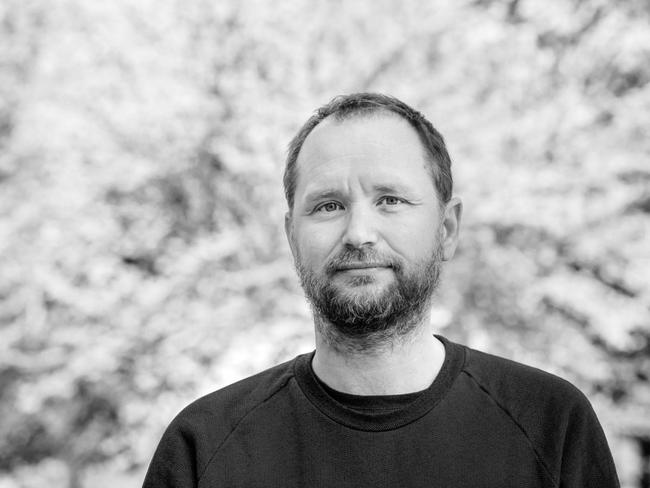
In response, Saraceno’s practice evolved into a meditation on the interface between the ancient and futuristic. He passionately rejects the designation of the Anthropocene: a concept he describes as a “myth” insistent on diluting blame for the earth’s continued ecological destruction among all humankind, including many Indigenous cultures that he defends as “blameless”. Conversely, he designates this epoch of “eco-suicide” as the Capitalocene, which he dates from the detonation of the first atomic bomb in New Mexico in 1945: a place he would later soar above with only the primitive thermodynamic energy of the sun.
In 2015, Saraceno would, in concert with a convocation of fellow artists, scientists and iconoclasts, declare the emergence of a new era: the Aerocene. As well as presenting a manifesto declaring a “new epoch, free from borders, free from fossil fuels”, the Aerocene Foundation developed a DIY flight kit with downloadable instructions and an app created with the Massachusetts Institute of Technology that predicts global wind and thermal rhythms, suggesting the approximate route and time frame for aerosolar flight. At the time of writing, a lazy flight from Perth to Brisbane would take a little less than two days.
“It is not rocket science,” the artist – whose fantastical cartoon-like sketches of flying machines have drawn comparisons to those of Leonardo da Vinci – guffaws. Indeed, in 2009 Saraceno would take up residence at NASA where he says engineers generally treated him as a curiosity. “I tried to explain to them that you don’t need $2 billion to fly. For $20 you can take off tomorrow. We can float on air as we float on water.”
However, he bookends – referencing billionaire rocket enthusiasts Richard Branson, Elon Musk and Jeff Bezos – “some people still think rockets are sexy”. Saraceno’s interdisciplinary reach has also seen him take up residence at both the Natural History Museum in London and the Max Planck Society in Germany.
Pressed as to whether he is candidly suggesting humans strap on a self-made balloon and catapult themselves across the planet at the mercy of the elements, Saraceno’s mood suddenly sobers. “The future is more frightening,” he says. “We are facing catastrophic disaster. We must find a new way.”
Notwithstanding, there remain very real obstacles to any prospective new pilot: with balloons often taking days to inflate, their innate vulnerability in extreme weather and a strictly limited payload threshold, which currently is less than 50kgs.
As a conceptual artist, Saraceno’s installations are microcosms of his greater practice – daring audiences to imagine otherwise unimaginable futures. Floating or suspended works such as Cloud Cities not only challenge perceptions of political and geographical boundaries, but attempt to wrestle the concept of utopia back from the realm of implausibility and reframe it within a clear paradigm of not-so-unrealistic aspirations.
The Queensland Gallery of Modern Art in Brisbane purchased four such model Biosphere works in 2014, including one containing Tillandsia cactus plants that can grow in oxygen alone, without the need for soil: demonstrating what a future beyond the earth may resemble.
For its latest major exhibition, Air, QAGOMA has returned to Saraceno for its headline installation. Drift: A Cosmic Web of Thermodynamic Rhythms is the artist’s first major installation that attempts to replicate the aerosolar modulations of his balloon sculptures within the confines of a gallery. Composed of mirrored foil and transparent Polyethylene, the molecular spheres float around the room, affected by the oscillation in temperature and the kinetic reaction to bodies entering the space. Saraceno likens the often-imperceptible movement to that of the cosmos: imperceptible but perpetual.
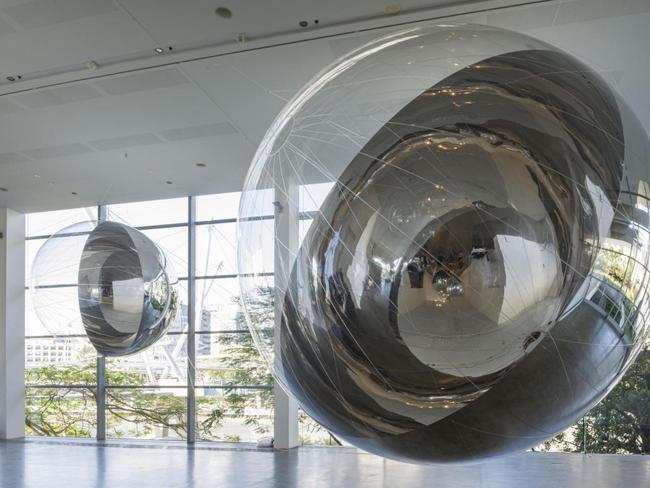
Air follows on from QAGOMA’s Water exhibition of 2019, which featured Saraceno’s fellow Berlin-based friend and contemporary Olafur Eliasson, whose Riverbed installation drew huge audiences. A natural successor to Water, the exhibition first was proposed by curator Geraldine Kirrihi Barlow as a leitmotiv to explore the economy of oxygen, specifically, how our global location and socioeconomic stature predetermines the quality of the air we breathe.
This inequity is explicitly examined in the companion Saraceno work We Do Not All Breathe the Same Air, which uses sensitive filter tape to measure atmospheric pollution at various points around the globe. The pandemic would bring a new and unexpected urgency to the theme, with widespread acceptance of the transmission of imperceptible airborne pathogens via a medium that is otherwise immaterial and ethereal. Facemasks have since become the totem of our times.
“I’ve been contemplating how incredible our atmosphere is: the whole evolution of plants to create the very particular cocktail of gases that we now take for granted,” Barlow says of her compulsion towards Air as a concept. “How amazing to look through that air at night and to just imagine it is simply gravity holding this mass of gases around our planet as we spin through space. It’s quite terrifying, really.
“But through their practice, artists such as Tomas make visible something that is otherwise invisible,” Barlow furthers. “It is said in many cultures that the wind brings change. But today this has taken on new meaning. When we look into the sky we see clouds, beautiful and ethereal. But these may be composed of fossil fuels and deadly. With Air our perception is challenged.”

Pairrebeener artist Jemima Wyman examines this supposition in her work Plume 20 2022, which features in the exhibition alongside a storied line-up of national and international artists. While Saraceno suggests the potential for a more utopian world, Plume 20 2022 is composed of the upheaval, chaos and violence of contemporary times. The majestic work spirals upward in a kaleidoscopic and amorphous knot of resplendent colour. But on closer inspection it becomes apparent that this compelling collage has a much more dystopian architecture.
Wyman began collating digital images of global uprisings in 2018 as the Yellow Vest Protests consumed France, filling the air with thick plumes of flare smoke. She soon recognised a pattern in her news feeds, from Hong Kong to Washington and the Amazon to anti-lockdown riots. A world in tumult, blanketed by the ominous smoke of acrid flares, tear gas, smoke bombs and arson. Over a six-month period Wyman began hand-cutting and stitching these collated pictures together into a 4.5m towering work, composed of around 2400 images in total. Despite its aesthetic allure, Plume would emerge as what Wyman describes as a “map of distress”.
“There was a moment during the stay-at-home orders in Los Angeles, where my family was home with the windows closed because of the toxic air and a glowing red sky outside from wild fires,” the now LA-based artist explains. “It looked like the apocalypse had arrived. The best way for me to respond to ominous moments is making art. It’s the most proactive and expressive space that I can operate in. It’s my medium and the process has the added effect of self-care and meditation.
“Australia has its own local issues but is also affected by this sense of global dread, uncertainty, and political division,” Wyman observes. “To use a strange analogy: I think it is almost like Australia is in therapy. Things are being articulated and wrestled with that have been buried or not acknowledged throughout its history. So it is difficult and unsettling and confronting, but at the same time healthy to perhaps not present as a happy-go-lucky-nation.”
A draft pushes down the river and through the window of Tomas Saraceno’s studio, scattering papers across the desk. “There is nothing new here,” he reasons, gesturing towards the balloon sketches and flight diagrams. “Air, wind, sun: they are not new technologies. We now look at a screen to read the temperature, to understand the weather. We’ve forgotten how to look to the sky. We have lost this once vital sense. But the air belongs to everyone and we must fight to get it back.”
Air opens November 26 at QAGOMA and runs until April 23.
Tomás Saraceno also has a solo exhibition opening at the Museum of Old and New Art (Mona), Tasmania. Oceans of Air runs from December 17 until July 24, 2023.

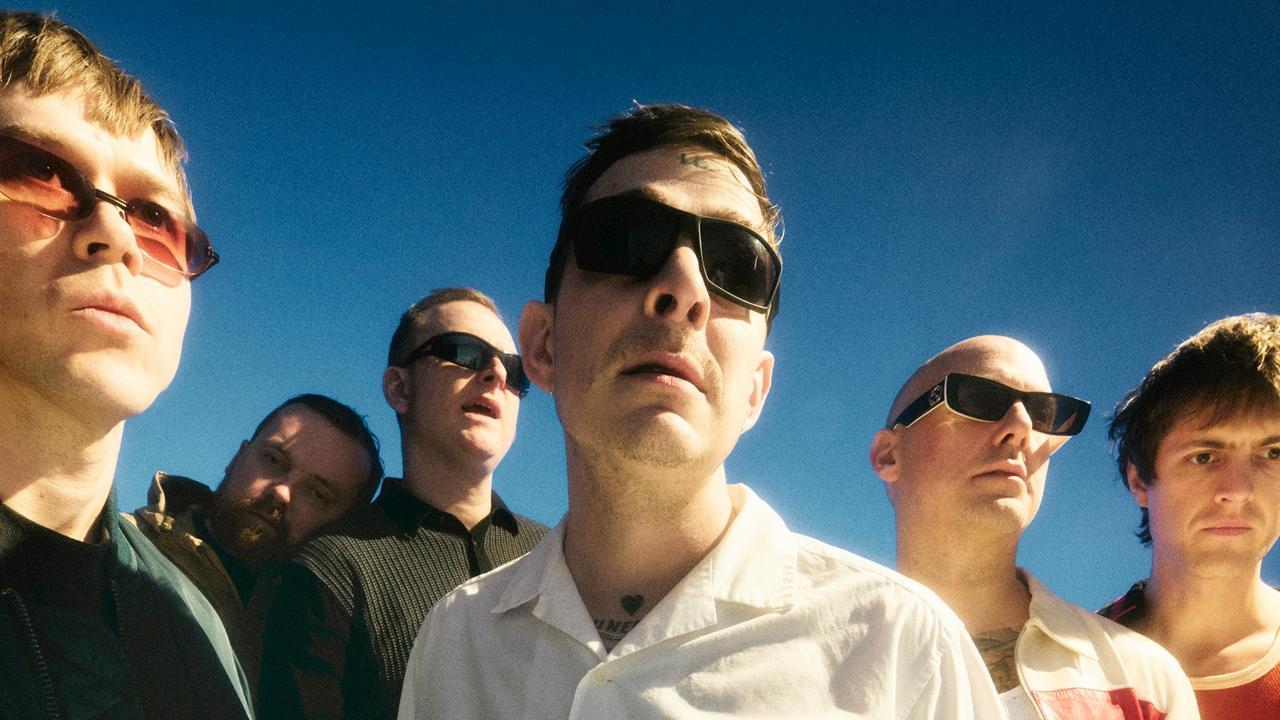
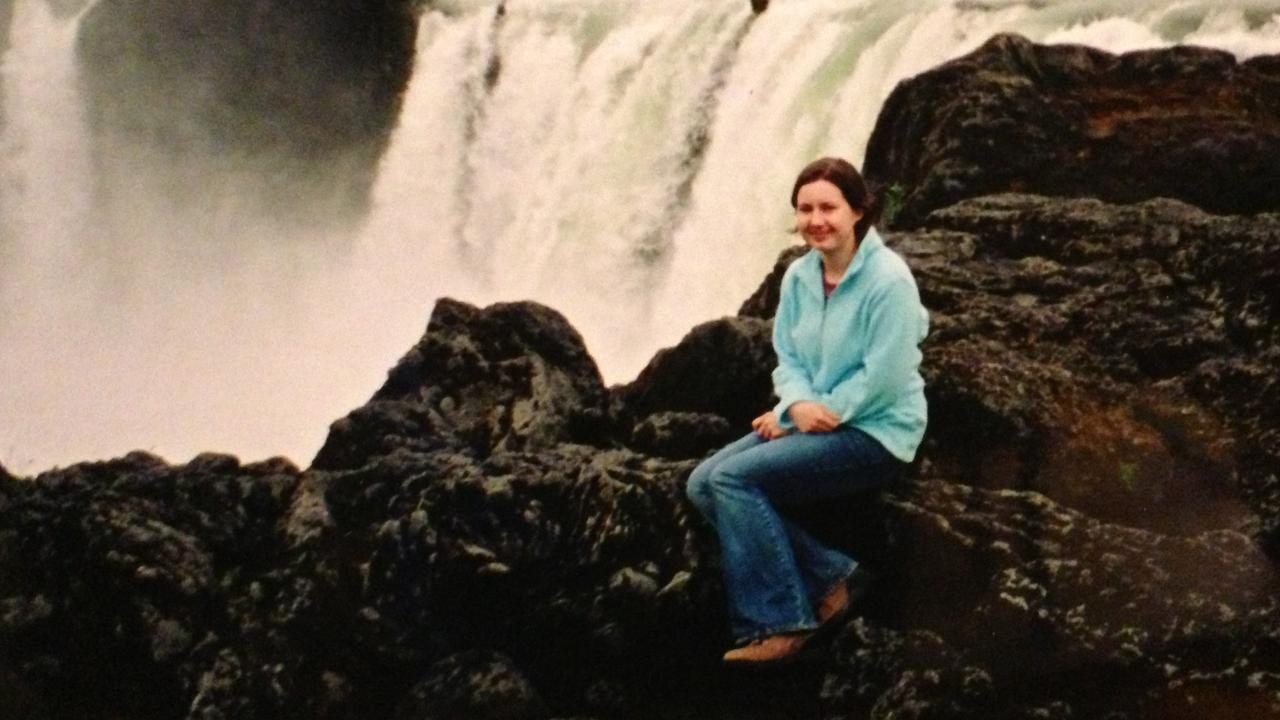
To join the conversation, please log in. Don't have an account? Register
Join the conversation, you are commenting as Logout